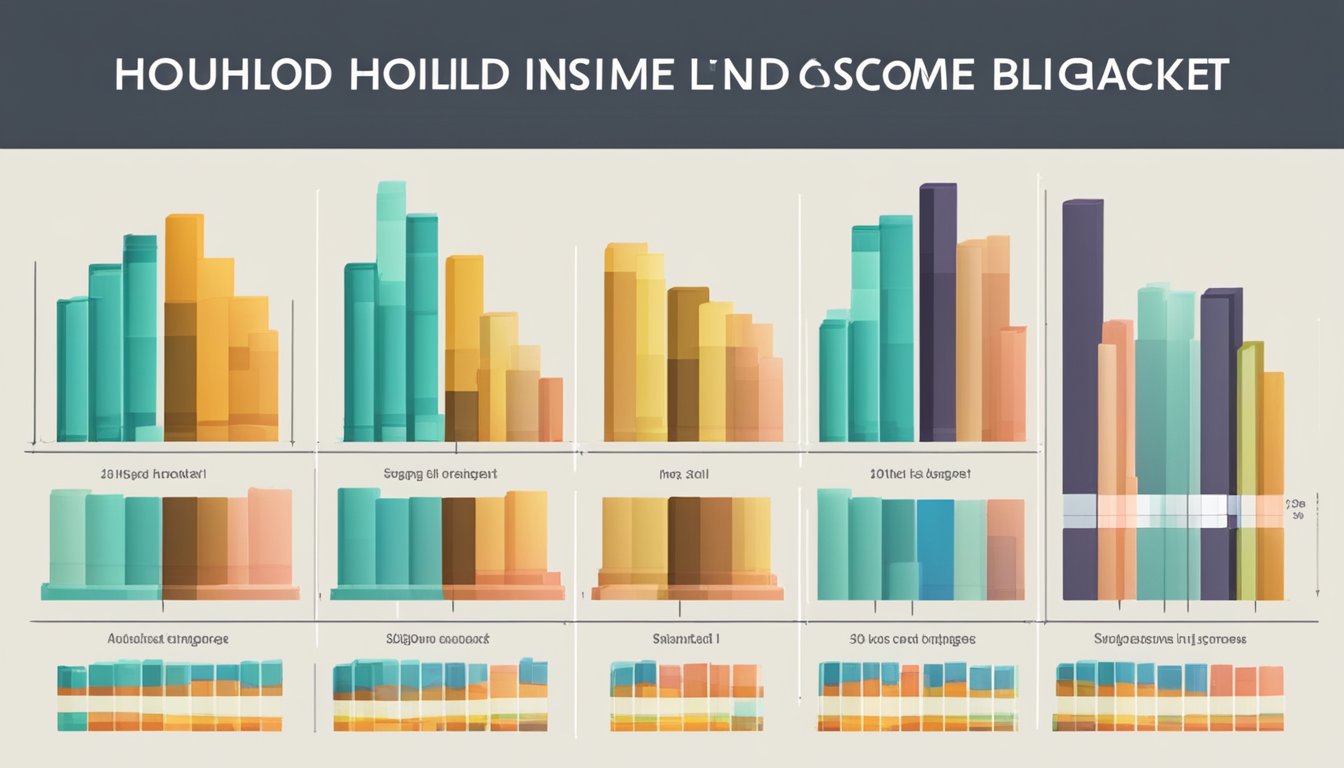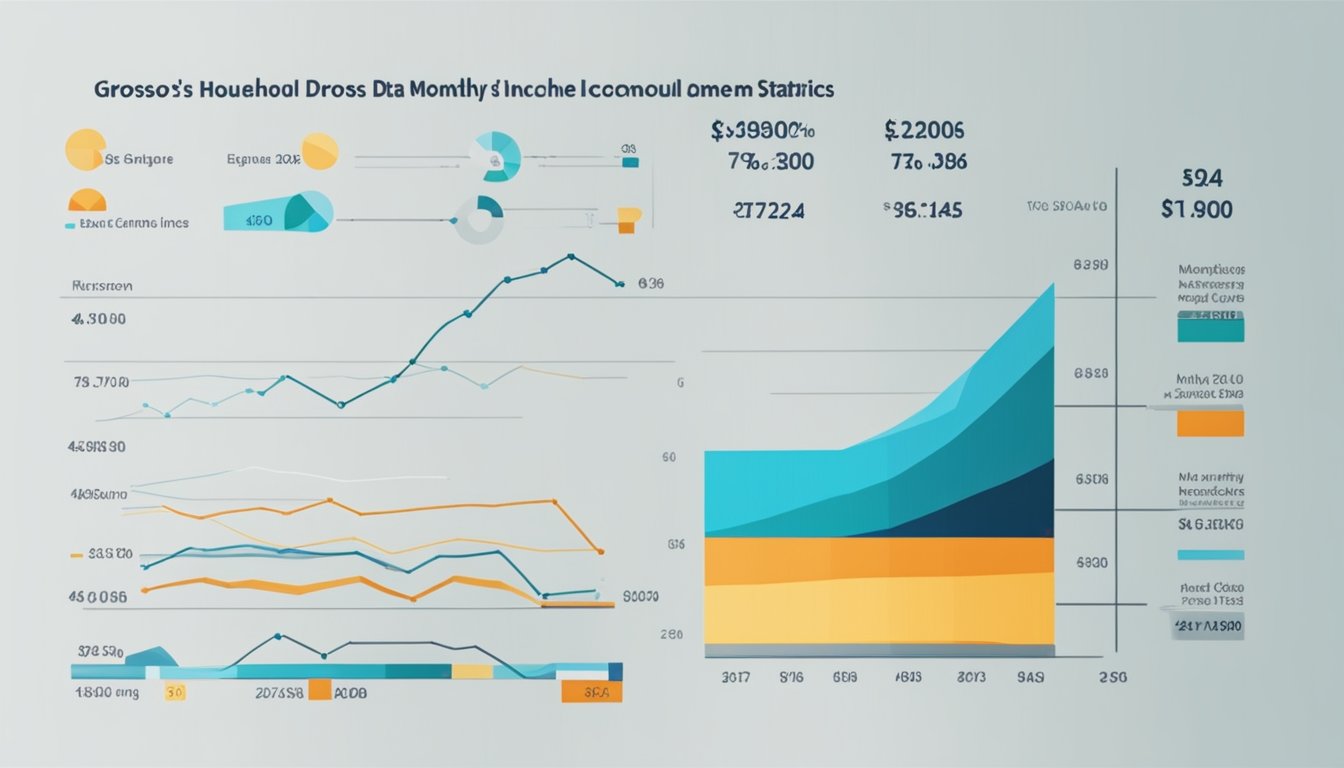If you’re living in Singapore, you might have heard of the term “gross monthly household income” before. This is the total amount of income earned by all members of a household from employment or business, excluding foreign domestic workers. It’s an important indicator of a household’s financial stability and is often used to determine eligibility for government assistance programs.

Understanding household income in Singapore can be a bit tricky due to the country’s unique demographics and economic landscape. For example, while the average household income has been steadily increasing over the past few years, income inequality remains a persistent issue. Additionally, government support and taxation policies can have a significant impact on a household’s net income, making it important to stay informed about changes in these areas.
Overall, gross monthly household income is an important metric to keep in mind when assessing your financial situation in Singapore. By understanding how it’s calculated and how it relates to other factors like government support and income inequality, you can make informed decisions about your finances and plan for a more stable future.
Key Takeaways
- Gross monthly household income is the total amount of income earned by all members of a household from employment or business, excluding foreign domestic workers.
- Understanding household income in Singapore requires knowledge of the country’s unique demographics and economic landscape, as well as government support and taxation policies.
- By keeping track of your gross monthly household income and staying informed about related issues, you can make informed financial decisions and plan for a more stable future.
Understanding Household Income in Singapore

If you’re living in Singapore, understanding your household income is crucial. It’s the total amount of money earned by all members of your household from employment or business. Household income is measured in gross monthly income, which includes basic wages, overtime pay, allowances, commissions, bonuses, and employer CPF contributions.
Components of Household Income
Your household income is made up of several components. Basic wages are the amount you earn for your regular work hours. Overtime pay is the extra money you earn when you work beyond your regular hours. Allowances are additional payments for things like transport, housing, and meals. Commissions are payments you receive as a percentage of sales or deals you close. Bonuses are extra payments you receive at the end of the year, which can be calculated as a percentage of your annual income.
Household Income Measurement
In Singapore, household income is measured in gross monthly income. This is the total amount of income earned by all members of your household from work, before any deductions such as income tax or CPF contributions. It includes amortisation of annual bonuses (1/12 of the amount) but excludes taxes.
It’s important to note that personal income tax is calculated based on your individual income, not your household income. This means that each member of your household is responsible for paying their own personal income tax based on their individual income.
Understanding your household income is crucial to managing your finances in Singapore. By knowing the components of your household income and how it’s measured, you can make informed decisions about your spending and savings.
Income Distribution and Inequality

Singapore’s economy has been growing steadily over the years, and this has had a significant impact on the income distribution and inequality in the country. In this section, we will explore the income growth and trends, as well as the Gini coefficient and income inequality in Singapore.
Income Growth and Trends
According to the Singapore Department of Statistics (SingStat), the average monthly household income from work per household member (excluding employer CPF contributions) among resident and resident employed households has increased over the years. From 2000 to 2023, the average monthly household income has increased from $2,410 to $5,200, an increase of 115%.
Furthermore, the Key Household Income Trends report by SingStat shows that from 2018 to 2023, the median monthly household income from work among resident employed households increased by 3.1% cumulatively or 0.6% per annum in real terms. Accounting for household size, median monthly household income from work per household member rose from $3,287 in 2022 to $3,500 in 2023, an increase of 6.5%.
Gini Coefficient and Income Inequality
The Gini coefficient is a measure of income inequality, with a score of 0 indicating perfect equality and a score of 1 indicating perfect inequality. According to the Key Household Income Trends report, the Gini coefficient in 2022 was 0.437, which decreased to 0.378 after adjusting for government transfers and taxes. This indicates a decrease in income inequality in Singapore.
However, despite this decrease, income inequality still remains a concern in Singapore. The report also shows that the top 10% of resident employed households had an average monthly household income of $29,760, which is 8.7 times more than the bottom 10% of households with an average monthly household income of $3,416.
In conclusion, while Singapore has seen significant income growth and a decrease in income inequality, there is still work to be done to ensure that all households have access to a decent standard of living.
Government Support and Taxation

Government Transfers and Schemes
The Singapore government offers various forms of support to households with lower income. For instance, the government provides the Community Health Assist Scheme (CHAS) to Singapore citizens, which offers subsidies for medical and dental care. Additionally, the government provides various financial support schemes such as the Workfare Income Supplement (WIS) and the Silver Support Scheme (SSS) to support low-income earners and elderly Singaporeans respectively.
In September 2024, eligible Singaporeans who are aged 21 years and above, residing in Singapore, who do not own more than one property, and with Assessable Income of up to $100,000 will receive a one-off cash payment of between $200 and $400. This support is aimed at helping households defray their living expenses.
Impact of Taxes on Household Income
Taxes can have a significant impact on household income in Singapore. The country’s progressive tax system means that individuals with higher incomes pay a higher percentage of their income in taxes. For instance, individuals with an annual income of more than $320,000 are subject to a tax rate of 22%.
On the other hand, the government provides various tax reliefs and rebates to help households reduce their tax burden. For example, Singapore citizens can claim tax reliefs on expenses such as donations to charitable organizations, medical expenses, and childcare expenses.
Overall, the Singapore government provides various forms of support to households with lower income, while also ensuring that the tax burden is distributed fairly across different income groups.
Household Income by Demographics

When it comes to household income in Singapore, there are several factors that can influence the amount earned. In this section, we’ll take a closer look at how income varies by demographics, including type of dwelling and household member.
Income by Type of Dwelling
One of the biggest factors that can affect household income is the type of dwelling that the household resides in. According to statistics from the Department of Statistics, households that live in landed properties tend to have higher incomes than those that live in non-landed properties. In fact, the median monthly household income from work for landed properties was $13,500, while non-landed properties had a median monthly household income from work of $9,000.
Income by Household Member
Another important factor that can impact household income is the number of household members. In general, households with more members tend to have higher incomes than those with fewer members. For example, households with five or more members had a median monthly household income from work of $11,000, while those with one or two members had a median monthly household income from work of $6,000.
It’s also worth noting that the income per household member can vary significantly depending on the number of working members in the household. For example, a household with one working member had a median monthly household income from work per household member of $4,500, while a household with two or more working members had a median monthly household income from work per household member of $2,500.
Overall, it’s clear that there are several factors that can influence household income in Singapore. By understanding these demographics, you can gain a better understanding of how income is distributed and what factors may be impacting your own household’s income.
Data and Statistics Resources

When it comes to gross monthly household income in Singapore, there are various resources available to help you understand the trends and statistics. In this section, we will explore some of the most useful resources for accessing data and statistics related to gross monthly household income in Singapore.
Surveys and Reports
The Singapore Department of Statistics (SingStat) is the national statistical office that collects, compiles, and disseminates economic and socio-demographic statistics. SingStat provides a wealth of data and reports related to income, including the Household Expenditure Survey, Census of Population, and General Household Survey. These surveys and reports provide detailed information on household income and expenditure, employment income, and other related data.
In addition to SingStat, the Ministry of Manpower provides statistical tables related to income, including median gross monthly income from employment of full-time employed residents by industry. These tables are released on a regular basis and provide valuable insights into income trends in Singapore.
Online Data Portals
SingStat also provides an online data portal that allows users to access a wide range of data related to income and other socio-economic indicators. The SingStat Data Portal provides access to over 10,000 data series on a wide range of topics, including income, household expenditure, and employment.
Another useful online data portal is the .gov.sg website, which provides access to a wide range of government data and statistics related to income and other socio-economic indicators. The website provides a user-friendly interface that allows users to easily search for and access the data they need.
Overall, there are many resources available for accessing data and statistics related to gross monthly household income in Singapore. Whether you are looking for detailed reports or online data portals, there are many options available to help you understand income trends and patterns in Singapore.
Frequently Asked Questions

How can one calculate their family’s gross monthly income?
Calculating your family’s gross monthly income is a straightforward process. If you are paid annually, you can determine your gross monthly income by dividing your yearly earnings by 12 (the number of months in a year). The formula for calculating gross monthly income is as follows: Gross monthly income = Annual Income / 12 months.
What’s the average monthly income for a household in Singapore?
According to the latest data from SingStat, the average monthly household income from work (including employer CPF contributions) among resident and resident employed households in 2023 was $11,100. However, it is essential to note that the average monthly income varies based on factors such as the number of working members in the household, level of education, and occupation.
Which factors influence the calculation of per capita household income?
Per capita household income is calculated by dividing the total household income by the number of household members. The factors that influence the calculation of per capita household income include the number of working members in the household, level of education, occupation, and age.
Could you explain how household income varies by age group in Singapore?
In Singapore, household income varies significantly by age group. According to the latest data from SingStat, the median monthly household income from work (including employer CPF contributions) among resident and resident employed households in 2023 was $10,000 for those aged 25 to 34, $12,000 for those aged 35 to 44, and $10,000 for those aged 45 to 54.
What are the steps to figure out your household’s gross income each month?
To determine your household’s gross income each month, you need to add up the total income earned by all members of your household from employment or business. This includes amortisation of annual bonuses (1/12 of the amount) but excludes taxes. If you have any other sources of income, such as rental income or investment income, you should add these to the total as well.
Is the reported household income figure annual or monthly?
The reported household income figure is usually annual. However, it is often useful to calculate the monthly household income to help with budgeting and financial planning. To calculate the monthly household income, you need to divide the annual income by 12.




